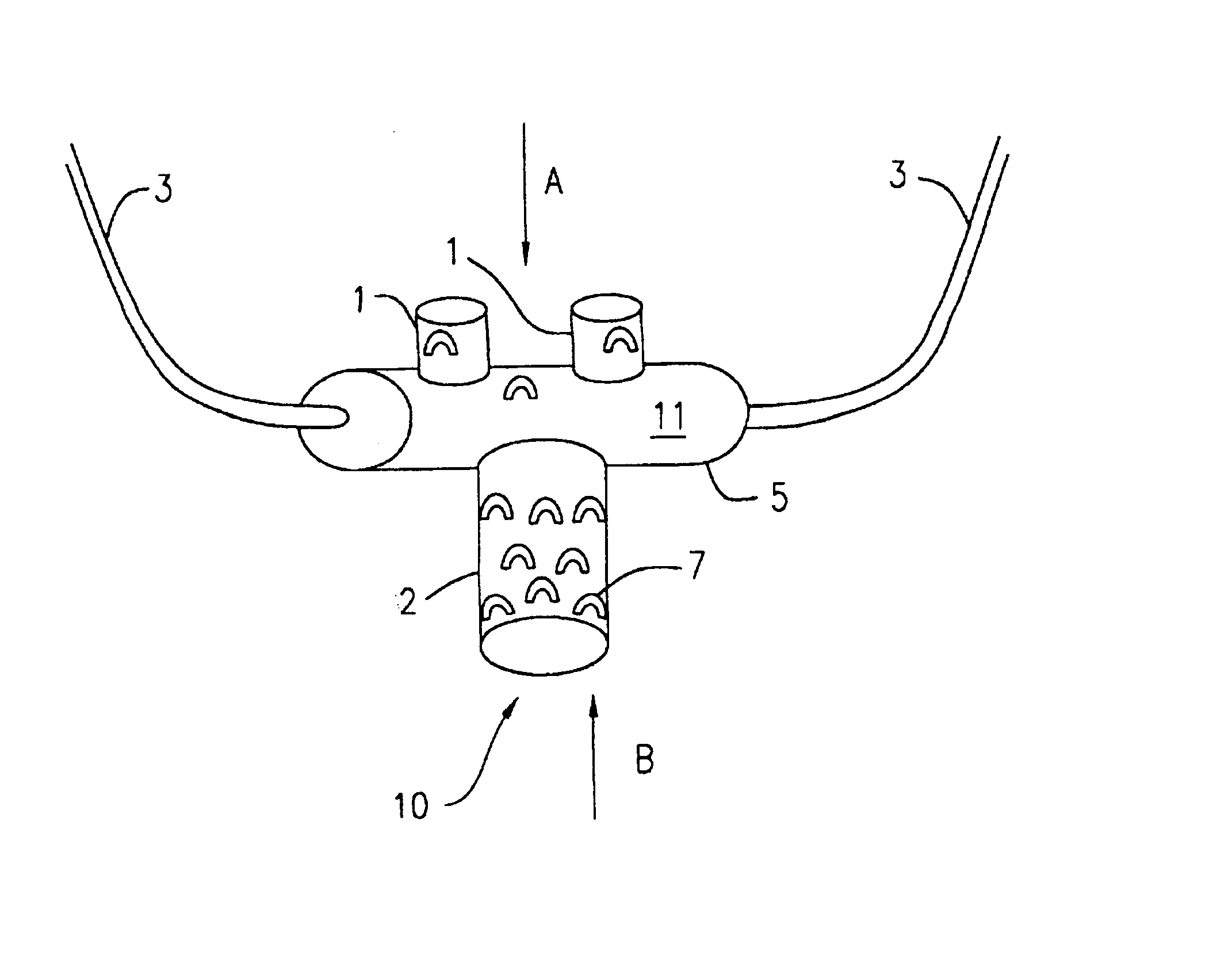Device and method for monitoring respiration
- Summary
- Abstract
- Description
- Claims
- Application Information
AI Technical Summary
Benefits of technology
Problems solved by technology
Method used
Image
Examples
Embodiment Construction
[0027]The preferred embodiment of the respiratory sensor is fabricated using lamination and adhesive techniques on a film substrate. The lamination is performed in such a way as to provide the proper physical relationship of the individual sensor parts, which detects the patient's nasal and oral respiration. The sensor is a closed volume or bubble of plastic film with extensions or protrusions extending towards the nostrils and mouth.
[0028]Respiration is detected through the change in temperature of the air enclosed in this bubble when ambient room air, inspiratory, and expiratory air flows pass over the sensor. This change in temperature generates a change in pressure in the closed volume largely in accordance with Gay-Lussac's Law, which is:
P / T=P′ / T′ where V is constant (1)
and where P=pressure, T=temperature, V=volume.
These pressure changes are monitored by a pressure sensor in the control box connected to the bubble via at least one tube.
[0029]A second respiration input signal i...
PUM
 Login to View More
Login to View More Abstract
Description
Claims
Application Information
 Login to View More
Login to View More - R&D
- Intellectual Property
- Life Sciences
- Materials
- Tech Scout
- Unparalleled Data Quality
- Higher Quality Content
- 60% Fewer Hallucinations
Browse by: Latest US Patents, China's latest patents, Technical Efficacy Thesaurus, Application Domain, Technology Topic, Popular Technical Reports.
© 2025 PatSnap. All rights reserved.Legal|Privacy policy|Modern Slavery Act Transparency Statement|Sitemap|About US| Contact US: help@patsnap.com



